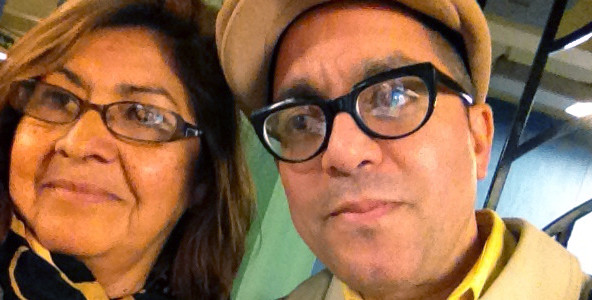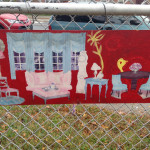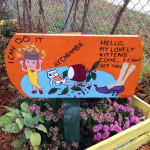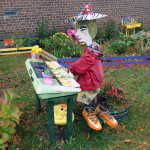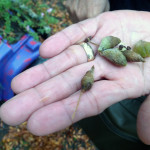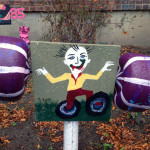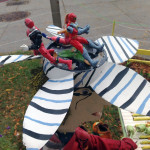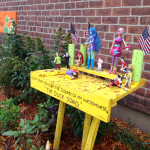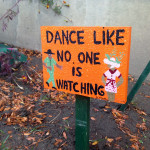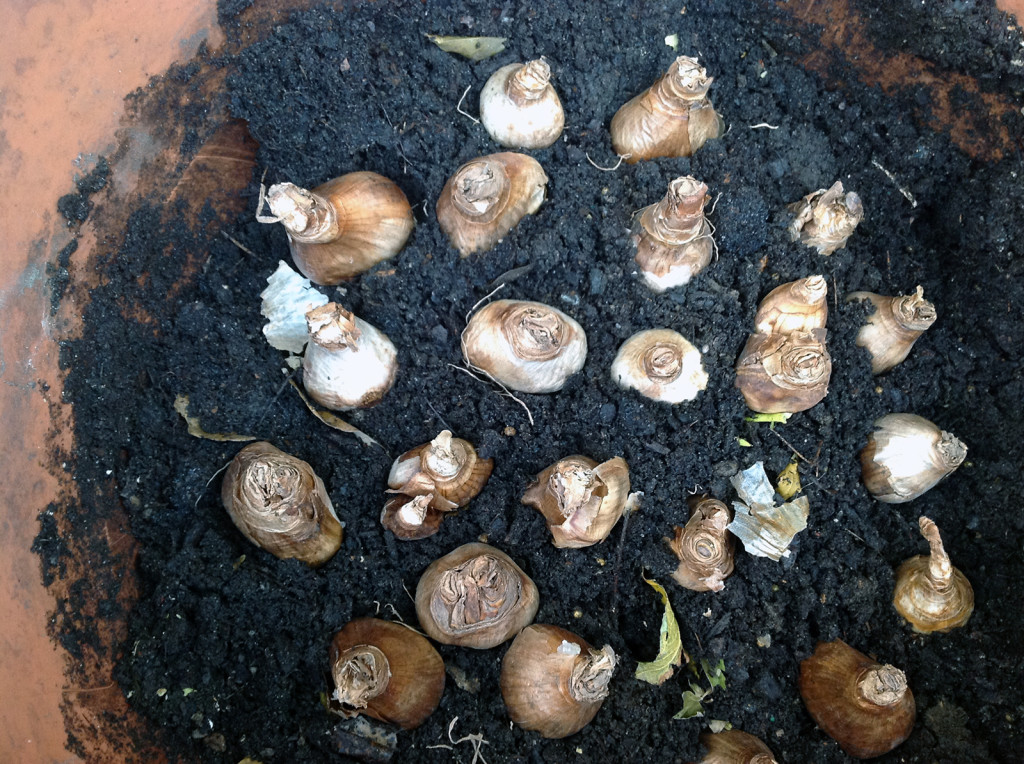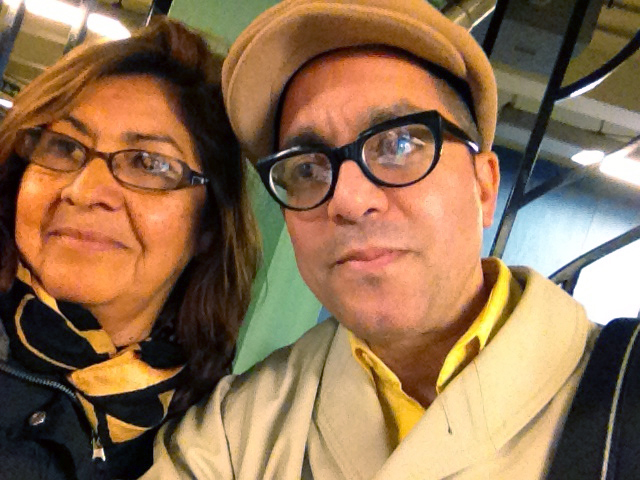Nicolás Dumit Estevez: Thank you again for inviting me to visit the garden that you created at Pomonok Houses in Flushing, Queens. It has been six years since we met at the Queens Museum during the workshop on art and life I taught with that organization. Life as Material for Art and Vice-Versa

How did your garden come about? Have you gardened before?
Rosalina Mestric: I never gardened before. One day, I was walking around the neighborhood and saw a bunch a people. I wondered what was going on. I spoke to a guy named Greg and he informed me that he was part of Pomonok Green Community. Green Community was teaming up with an organization called Million Trees NYCthat donated trees to Pomonok Housing and asked if I would like to help. I signed up. We planted 12 trees the following week. I joined the Green Community and then went to get my pruner’s certification. The rest is history.

NDE: Where does the idea of using recyclables, such as discarded toys, car tires, teddy bears and shoes come from?
RM: I walked around the neighborhood and I saw things people used to throw out. I decided to use them in another way; that not everything you throw out is trash. After a while, people loved the work I did and they would leave stuff in my garden so I could use it.
NDE: What are some of the reactions of those who encounter your garden on a daily basis?
RM: I received a lot of positive feedback from people. People enjoyed seeing the artwork I created and the stuff they contributed. I would always go home and have a better idea. I would constantly change the garden around. Every day people would walk by and the next day see it completely different. Lots of people also questioned, how was I able to do it all? “Lots of work and no breaks.”
NDE: How did you go about creating a garden in a public housing community in New York City and what are some of the steps you had to go through to realize your vision?
RM: You have to ask management for permission for a garden. Public housing has a garden competition that you must register for every year. That’s how I started displaying my art in my garden. My first garden was dedicated to my husband who had passed away. I focused on military themes because he was in the military. After that the children in Pomonok loved the garden and would always ask questions. Some would leave their toys in the garden. After that, I wanted to create one for the children of Pomonok using the toys they left behind.
NDE: Your garden combines all kinds of elements: war, public service institutions, U.S. symbols, memorials, as well as the personal and the imagined. Can you talk about how you developed and brought together all of these parts?
RM: My husband was part of the military. He passed away in 2010 and I wanted to do a garden in honor of him. Gardening helped me focus on him without remembering that he is no longer with us on earth. But he will always be on my mind.
NDE: Your garden includes paintings, sculptures, signs and installations. Can you elaborate on your work process?
RM: Lots of my signs are inspiring quotes so people can read them while they walk around Pomonok. My painting came from many ideas. Some were inspired by people: a neighbor, Prince William’s Royal Family, and even the Manager of Pomonok. Some were ideas that I wanted to recreate like the Lorax. I can’t tell you in detail my working process because it all comes from inside my mind. There’s a lot of thinking involved and probably not enough space in an interview.
NDE: During our recent encounter, you mentioned that your garden keeps changing over time. You also mentioned that, because of construction, you were required to pack your artwork the next day after our meeting. What do you have in mind for next year in terms of themes?
RM: I have some new ideas but nothing set in stone yet. You are going to have to stay tuned.
NDE: What are some of the lessons that you have been learning from working with the Earth?
RM: The most useful painting tool I found is a Q-tip. You don’t need expensive tools to make great art, just imagination. Planting requires lots of patience and love.
NDE: What have you learned as an artist from working in your garden – sculpture park?
RM: Everyone is going to have an opinion, some good and some bad. But as long as you’re loving what you’re doing and it’s not harming anyone or thing… continue doing it.
NDE: I feel that our relationship has gone full-circle. When I taught at the Queens Museum in 2008 I gave students tangerines and asked them to return the seeds. I went on to plant the seeds in Corona Park. This was a symbolic gesture. When we met in Flushing six years later, you gave me some bulbs as well seeds that I planted in my garden in the South Bronx. I hope next time you come to see me in the Bronx. We can plant together some of bulbs I have left along the Bronx River, and so continue to expand on the experience that was born at the Queens Museum. We can also dance along the Bronx River “like nobody is watching us.” Would you be up for this?
RM: Of course. It’s always great to give back to nature. After all, nature is always giving us without ever asking for anything back.
NDE: I am grateful for the time you and your daughter Glaucea spent with me. I am also grateful for the teachings of Linda Mary Montano (http://www.lindamontano.com), a friend and mentor. We studied her work during our workshop. I can feel her presence during our conversation today.
All images © 2014 Nicolás Dumit Estévez

